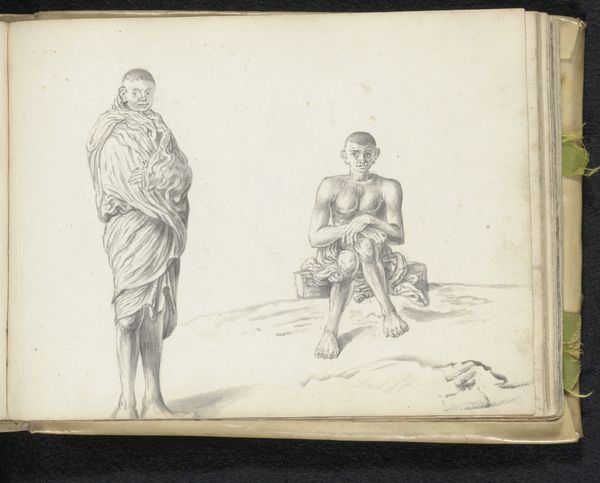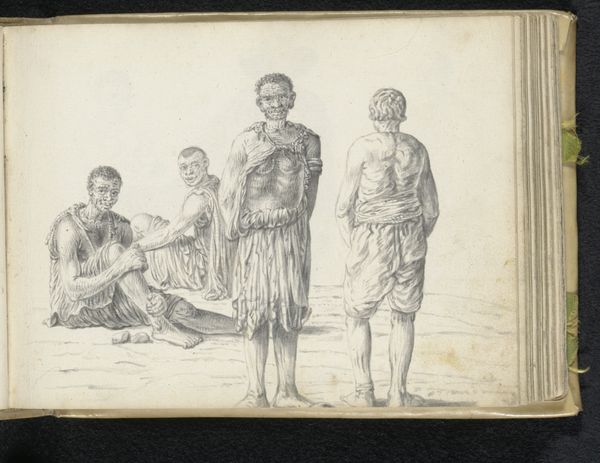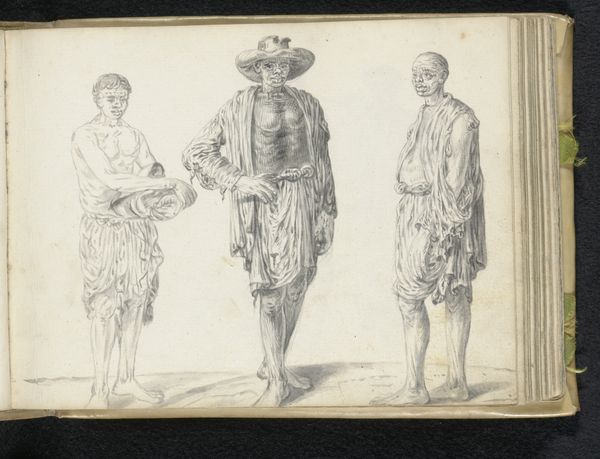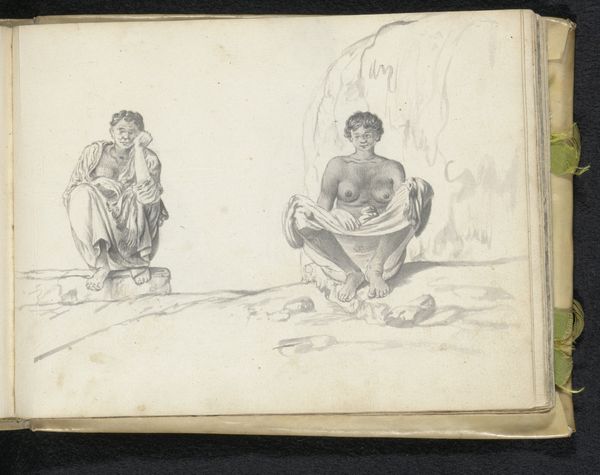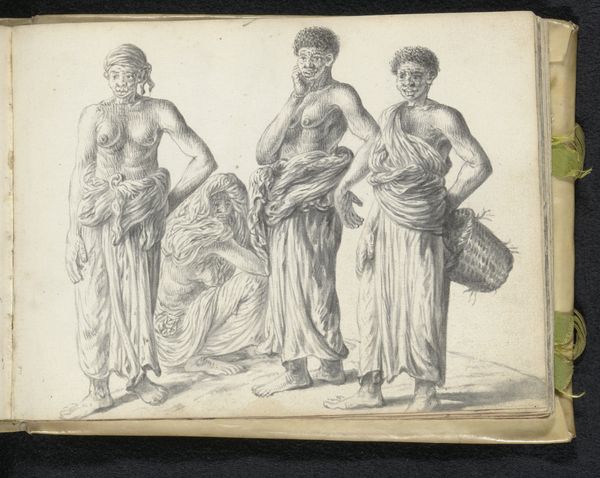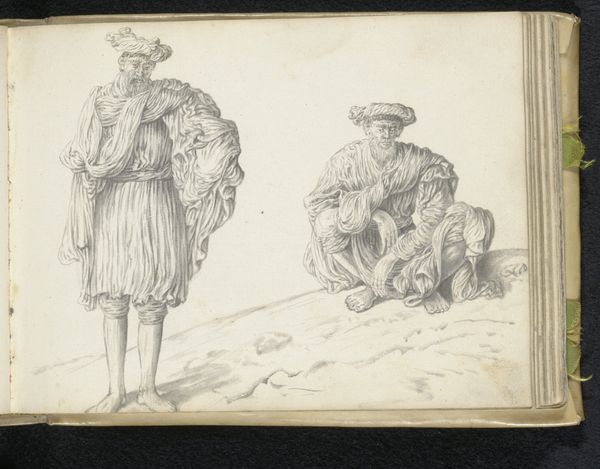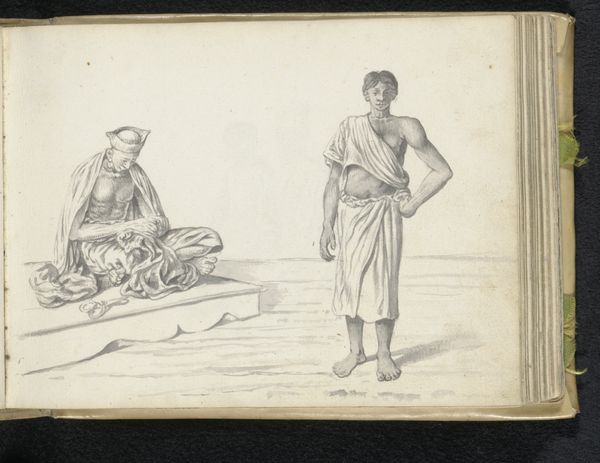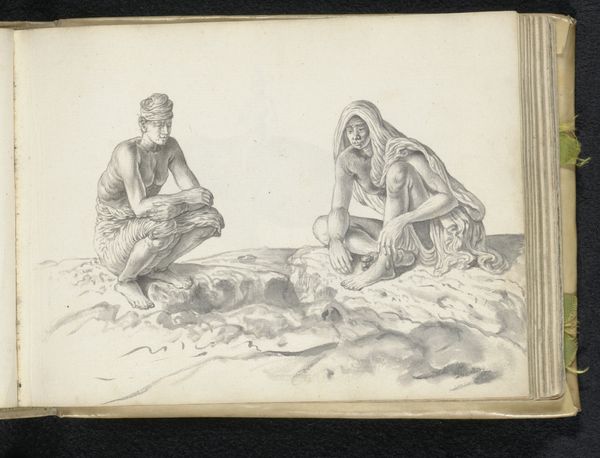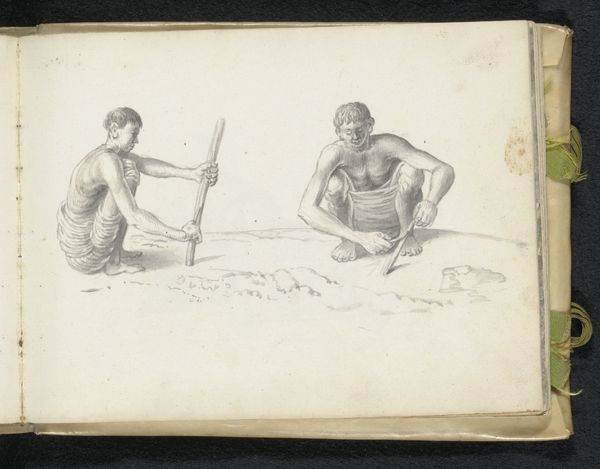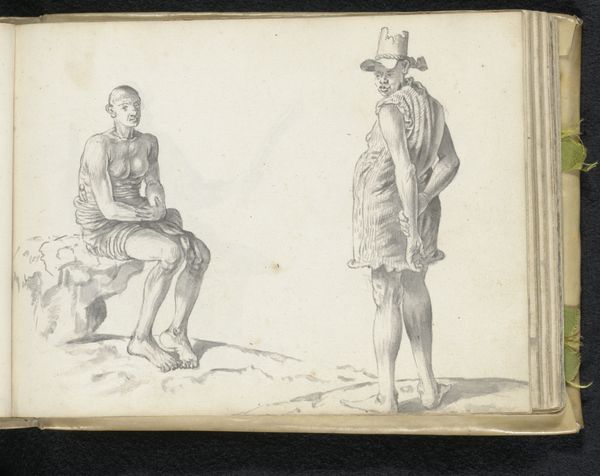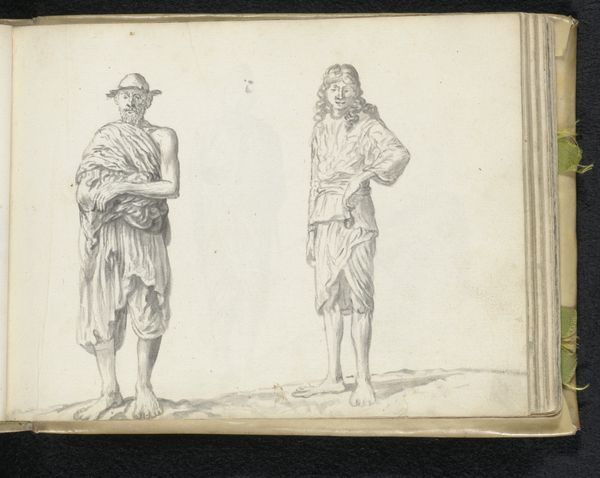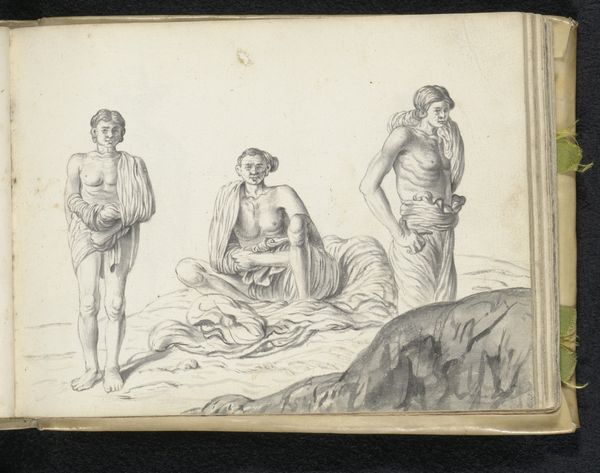
drawing, paper, pencil
#
portrait
#
drawing
#
dutch-golden-age
#
pencil sketch
#
figuration
#
paper
#
coloured pencil
#
pencil
#
genre-painting
Dimensions: height 148 mm, width 196 mm
Copyright: Rijks Museum: Open Domain
Curator: Right, let’s discuss this compelling drawing, “Three Labourers” by Esaias Boursse, created around 1662. What are your immediate thoughts? Editor: A sense of stillness strikes me—despite the title, it feels almost staged. Like actors pausing between scenes. Is it me, or does the artist convey a somber, reflective mood here? Curator: The material reality suggests otherwise. Boursse, during the Dutch Golden Age, would have encountered such laborers regularly. The sketch provides insight into the social fabric and daily life of the period, capturing the appearance and dress of working-class individuals. Editor: I see your point, but the meticulous detail softens their toil. Look at the delicate cross-hatching, the careful shading on their garments and tools—it's tender work. Do we know anything about where these workers came from, who commissioned the image, or its intent? Curator: Archival information confirms the period’s heavy reliance on labor, particularly among the non-European population of the Dutch colonies. So we see a depiction of people whose labor fueled their society. The artwork also makes reference to indigenous individuals whose oppression served colonial commercial interests. It is believed Boursse composed these sketches while working for the Dutch East India company. Editor: Right, so commerce and oppression... which shifts my reading entirely! Suddenly those quiet moments are freighted with injustice. I now interpret an uncomfortable tension –the composition so still yet full of potential disruption of revolt... Curator: Perhaps you are bringing your own subjectivity to the forefront? Yet that discomfort has its place. What about the work's process? It is only pencil and maybe coloured pencil on paper, but manages such definition... Editor: True, the pencil is deceptively simple, the choice itself speaks volumes –a portable, readily available tool for quick studies but that allows nuanced human observation. It makes it more poignant than a grand oil painting! To return to how we began: it captures fleeting instants amid grueling and systemic exploitation. A melancholic record. Curator: Exactly. The beauty lies in that very paradox, between the delicate execution and the harsh realities depicted. Editor: I’ll be pondering this one for days. Thanks for helping me see deeper. Curator: Likewise. It shows the value of questioning received perceptions when exploring artistic work.
Comments
No comments
Be the first to comment and join the conversation on the ultimate creative platform.
